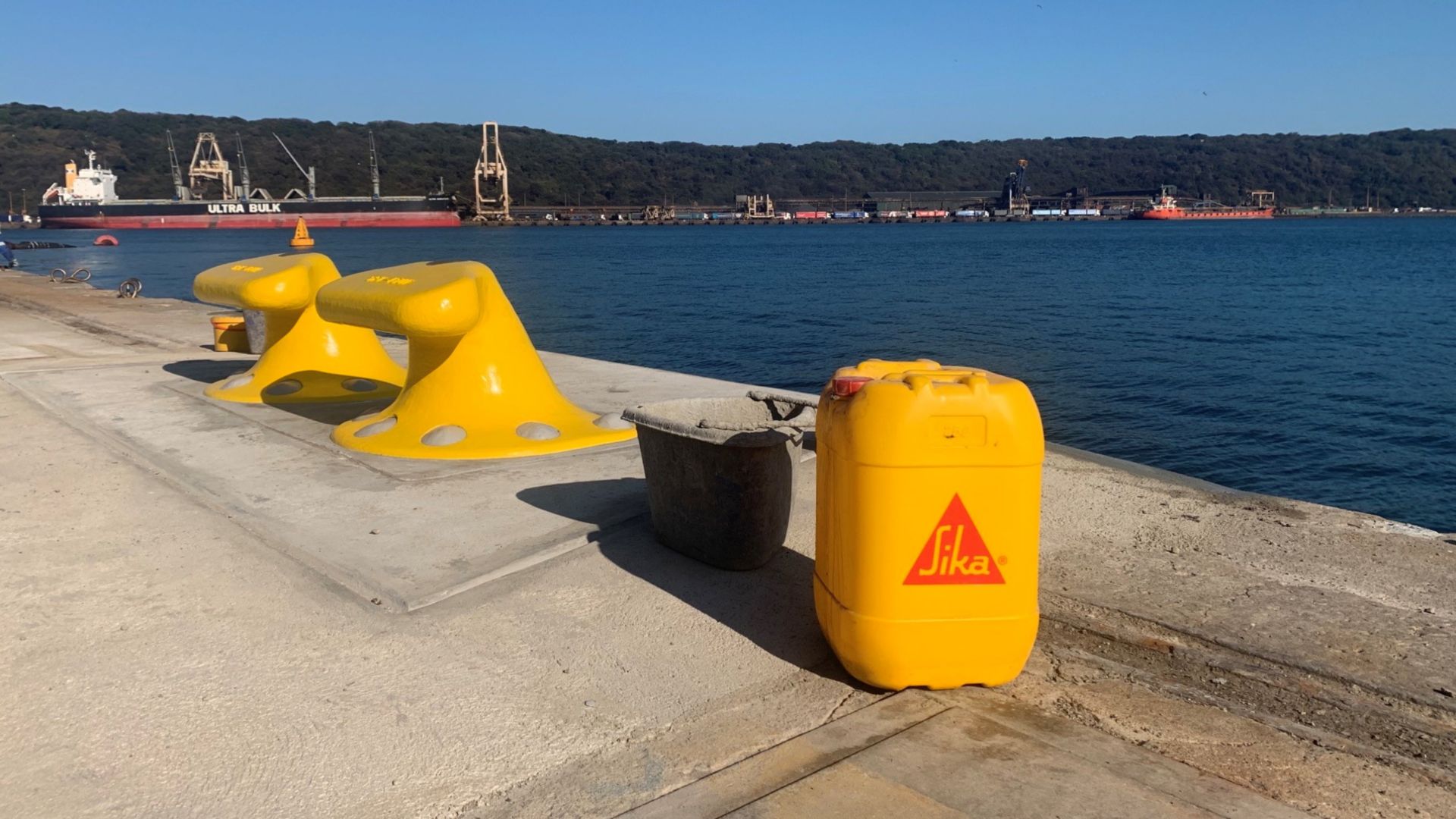2021
Kwa-Zulu Natal
Mediterranean Shipping Company, better known as MSC, required berth repairs to their new docking site next to the new passenger terminal, in the Durban harbour.
Stefanutti Stocks were awarded the project for both the berth repairs and the construction of the passenger terminal. The berth repairs - a project not as simple as it seemed - required the existing bollards to be removed and replaced, together with the rehabilitation and strengthening of the concrete surrounding the bollards. To ensure the durability and immovability of the berth and bollards, the entire rehabilitation took 8 months to complete. On the merit of meeting all the stringent requirements, Sika’s range were the products of choice.
Since the scope of the project involved removing and replacing 42 bollards, and thereafter to remove and replace 21 fenders, several various specialists were engaged. The primary specialist was Engineering Projects and Naval Architecture, who designed and planned the project. Doing the specialist work were the main contractors, Stefanutti Stocks Coastal, together with the sub-contractors, Structural Maintenance and Holmes Cutting and Coring. The project and quality managers were sourced from Turner and Townsend.
Process
To start, Holmes cut out and removed the existing damaged fenders, bollards and their anchoring bolts. They then cored 16 holes per bollard, at a raked angle to allow for the new reinforcing, each 80 mm in diameter and 8 m deep. Structural Maintenance filled all cored holes on all 42 bollards with the SikaGrout®-212 a high-strength cementitious grout and Sika® UCS-01. Due to the marine environment, Sika® UCS-01, an underwater admixture which forms a jellylike substance when used with a cementitious product, was used with the SikaGrout®-212, to prevent small sand particles from washing away. The SikaGrout®-212 was specifically chosen for the environment because of its low shrinkage capabilities.
Once the installation of the bollards was complete, Stefanutti stocks rehabilitated the existing concrete around the bollards. This was done using SikaGrout®-212 and a joint sealant system comprising of Sika® Primer-3 N and Sikaflex® PRO-3 i. The SikaGrout®-212 was used to fill up the large voids of concrete creating construction joints between the old and new concrete. These construction joints required a joint sealant system to seal all recesses and cavities. The use of these products created a neat uniform look around each bollard and allowed for movement between the old and new substrates.
Thereafter the so called ‘Dead Man Anchor Block’ needed to be rebuilt 20 m inside of the main key wall, spanning the full 400 m length of the berth wall. It’s a massive concrete anchor that supports the surrounding bollards and helps resist the forces exerted on them by the huge, docked ships. Construction of the dead man anchor required an initial base unit of cast concrete, where a surface retarder, Sika® Rugasol®-2 Liquid, was required to prevent the concrete from setting and to provide a key for the newly poured concrete before the second layer was cast upon it. To further ensure the berth wall was structurally sound, three new anchoring rods were installed between the dead-man’s anchor and the bollards. To complete the refurbishment process, Sika® Antisol® E was applied as a curing membrane to the surface of the concrete to reduce water loss and prevent shrinkage.
Challenges
The Covid-19 protocols and regulations were an obvious challenge, with lockdown delays compromising timeous project completion. The conditions of the unique site itself, threw out a few unforeseen challenges. Along with the ever-changing tides, and sea water seeping into the core holes, the contractors also had to deal with the narrow tolerances around the large Y40 reinforcing bars. The areas surrounding the construction site were reclaimed lands. This presented problems through the presence of old oil, fuel pipes, old railway lines, water lines and the main electrical feed to the entire port. Working around these historical objects made every task a little more difficult.
Despite the unique conditions, and unexpected challenges of this project, Sika’s specialised products ensured success.

